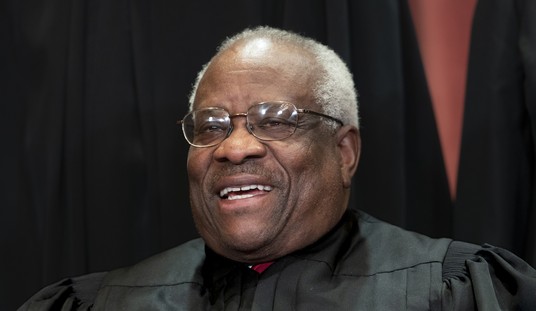
The Supreme Court this morning, in Evenwel v. Abbott, unanimously rejected a challenge to how its “one man, one vote” rule is used to draw state legislative districts. The plaintiffs in Evenwel wanted the Court to require Texas’ districts to have roughly equal numbers of eligible voters, rather than equal total populations. A win would have been good news for Republicans; while some districts may have a disproportionate number of children, the two big categories of ineligible voters are illegal immigrants and felons, and both of those tend to be clustered more in Democratic districts. As a result of Evenwel, the presence of large numbers of illegal immigrants in an area will give that area more representation in state houses and dilute the voting power of Americans eligible to vote. However, the Court did not decide whether to prohibit states from using eligible voters rather than total population to draw state legislative districts. The Court also did not weigh into the debate, extensively covered in the briefs, over whether it would be practical to use citizen-voting-age population (CVAP) data from the Census Bureau’s American Community Survey (ACS) to determine the voting-age population.
Evenwel affects only state legislative districts, because the Fourteenth Amendment already explicitly requires that total population, rather than eligible voters, be the basis for drawing House districts: “Representatives shall be apportioned among the several states according to their respective numbers, counting the whole number of persons in each state, excluding Indians not taxed.” With the death of Antonin Scalia, conservatives should get used to losing at SCOTUS unless and until Ted Cruz wins in November, but realistically, Evenwel was always a long shot. Only Justices Alito and Thomas declined to join the entire opinion by Justice Ginsburg, and both still agreed that there is no Constitutional requirement that state districts be drawn by reference to the number of eligible voters; Justice Thomas, as he often does, wrote alone to argue that the Court never did have a basis in the text or history of the Constitution for the “one man, one vote” rule in the first place.
MORE on the Court’s Reasoning:
The Court’s decision rested in good part on the history of the Fourteenth Amendment and of the drawing of districts. Justice Ginsburg found that the Fourteenth Amendment’s explicit choice of total population as the basis for House districts (a revision to the prior “three-fifths” rule that had counted slaves as only three-fifths of a person for purposes of House districts and the Electoral College, as a compromise against the pro-slavery view that the enslaved should be counted as if they were full citizens) carried over as well to at least permit state districts to be drawn the same way, even though the Fourteenth Amendment is silent on state districts:
[T]he constitutional scheme for congressional apportionment rests in part on the same representational concerns that exist regarding state and local legislative districting. The Framers’ answer to the apportionment question in the congressional context therefore undermines [plaintiffs]’ contention that districts must be based on voter population…[The plaintiffs]…extract far too much from selectively chosen language and the “one-person, one-vote” slogan. For every sentence [plaintiffs] quote from the Court’s opinions, one could respond with a line casting the one-person, one-vote guarantee in terms of equality of representation, not voter equality.
While one must always watch liberal Justices’ rhetoric for subtle shifts with an eye towards future cases, it is clear that this conclusion did not carry decisive weight in Evenwel other than to caution against adding a new requirement to those the Court has already imposed on states:
What constitutional history and our prior decisions strongly suggest, settled practice confirms. Adopting voter-eligible apportionment as constitutional command would upset a well-functioning approach to districting that all 50 States and countless local jurisdictions have followed for decades, even centuries. [Plaintiffs] have shown no reason for the Court to disturb this longstanding use of total population….As the Framers of the Constitution and the Fourteenth Amendment comprehended, representatives serve all residents, not just those eligible or registered to vote….Nonvoters have an important stake in many policy debates—children, their parents, even their grandparents, for example, have a stake in a strong public-education system—and in receiving constituent services, such as help navigating public-benefits bureaucracies. By ensuring that each representative is subject to requests and suggestions from the same number of constituents, total-population apportionment promotes equitable and effective representation. [Plaintiffs] point out that constituents have no constitutional right to equal access to their elected representatives. But a State certainly has an interest in taking reasonable, nondiscriminatory steps to facilitate access for all its residents.
Justice Thomas Stands Alone
Justice Thomas would have gone further, to rule that the Fourteenth Amendment’s silence on the question – in contrast to its explicit command on how to draw House districts – leaves the issue to the states:
[T]his Court has never provided a sound basis for the one-person, one-vote principle. For 50 years, the Court has struggled to define what right that principle protects. Many of our precedents suggest that it protects the right of eligible voters to cast votes that receive equal weight. Despite that frequent explanation, our precedents often conclude that the Equal Protection Clause is satisfied when all individuals within a district—voters or not—have an equal share of representation. The majority today concedes that our cases have not produced a clear answer on this point…
In my view, the majority has failed to provide a sound basis for the one-person, one-vote principle because no such basis exists. The Constitution does not prescribe any one basis for apportionment within States. It instead leaves States significant leeway in apportioning their own districts to equalize total population, to equalize eligible voters, or to promote any other principle consistent with a republican form of government. The majority should recognize the futility of choosing only one of these options. The Constitution leaves the choice to the people alone—not to this Court.
As Thomas noted, the Court’s decision to proceed without clear rules or a basis in the text left states without the guidance the rule of law is supposed to provide:
Because the Court has not provided a firm account of what States must do when districting, States are left to guess how much flexibility (if any) they have to use different methods of apportionment.
This inconsistency (if not opacity) is not merely a consequence of the Court’s equivocal statements on one person, one vote. The problem is more fundamental. There is simply no way to make a principled choice between interpreting one person, one vote as protecting eligible voters or as protecting total inhabitants within a State. That is because, though those theories are noble, the Constitution does not make either of them the exclusive means of apportionment for state and local representatives. In guaranteeing to the States a “Republican Form of Government,” Art. IV, §4, the Constitution did not resolve whether the ultimate basis of representation is the right of citizens to cast an equal ballot or the right of all inhabitants to have equal representation. The Constitution instead reserves these matters to the people. The majority’s attempt today to divine a single “‘theory of the Constitution’”—apportionment based on representation…—rests on a flawed reading of history and wrongly picks one side of a debate that the Framers did not resolve in the Constitution.
In Thomas’ view, the Court should get out of a business the Founding Fathers found too thorny to resolve with a single, national rule:
Republican governments promote the common good by placing power in the hands of the people, while curtailing the majority’s ability to invade the minority’s fundamental rights. The Framers recognized that there is no universal formula for accomplishing these goals. At the framing, many state legislatures were bicameral, often reflecting multiple theories of representation.
…So far as the Constitution is concerned, there is no single “correct” way to design a republican government. Any republic will have to reconcile giving power to the people with diminishing the influence of special interests. The wisdom of the Framers was that they recognized this dilemma and left it to the people to resolve. In trying to impose its own theory of democracy, the Court is hopelessly adrift amid political theory and interest-group politics with no guiding legal principles.
Given that we are a long way from five Justices who read the Constitution the way Clarence Thomas does, this is a warning that is likely to go unheeded for quite a while.












Join the conversation as a VIP Member